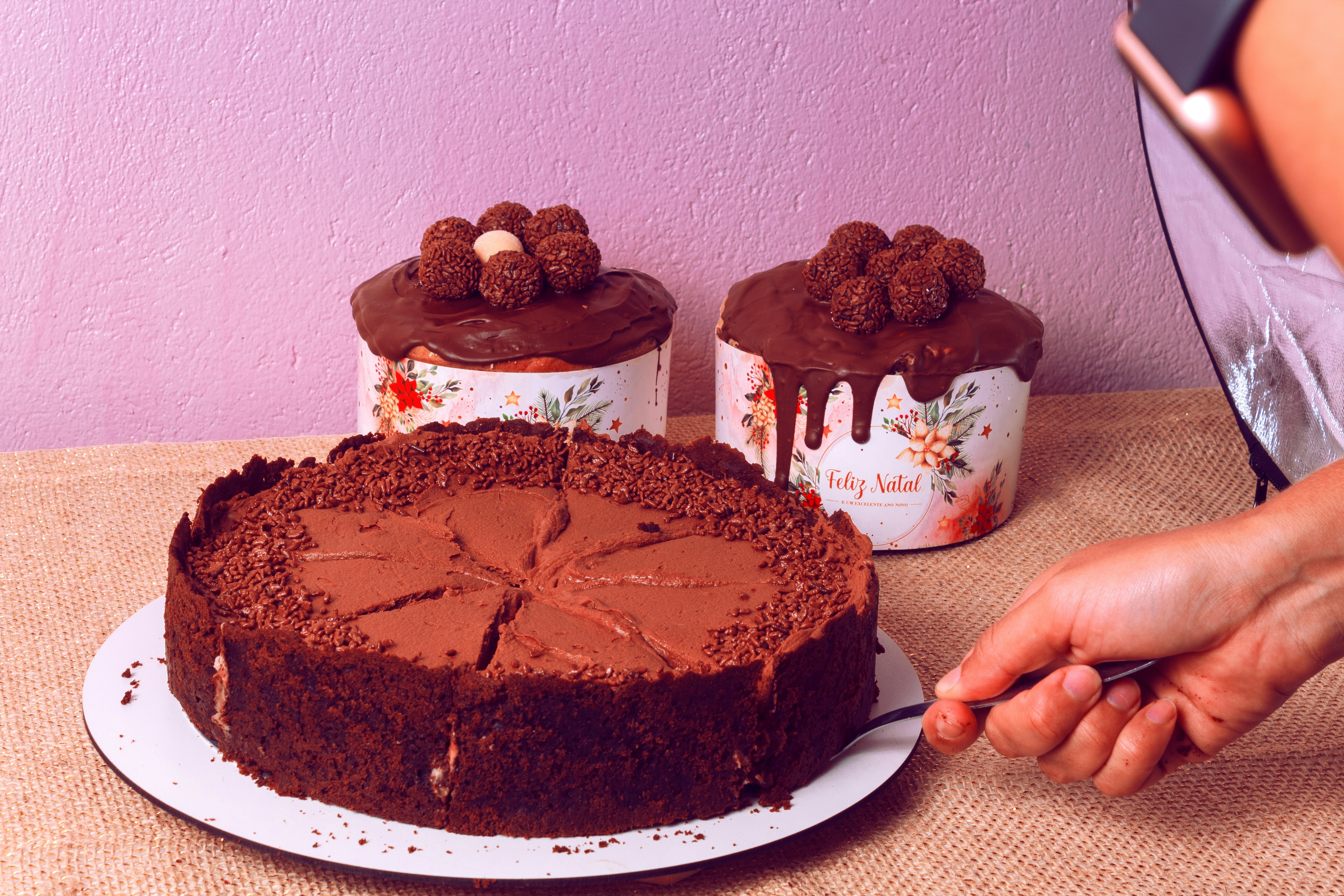
Understanding the Science of Cake Baking
Baking a cake is a delightful yet intricate process grounded in the principles of chemistry. Each ingredient plays a significant role in achieving the perfect texture and flavor. Flour, sugar, eggs, and baking powder are the main constituents that come together to create the desired result. The foundation of any cake is flour, which contains proteins that combine to form gluten when activated by liquid and kneading. This gluten development is essential as it provides structure and elasticity, leading to a cake that rises well without collapsing.
Sugar, on the other hand, serves multiple purposes. It not only sweetens the batter but also contributes to the cake’s moisture and helps in creating a tender crumb. During the baking process, sugar caramelizes, leading to the rich color and flavor that characterize an appealing cake. Additionally, it interacts with fats and proteins to create a leavening effect, further enhancing the cake’s fluffy texture.
Eggs are another crucial component, providing both moisture and structure. The proteins in eggs coagulate during baking, helping to bind the ingredients together while also adding to the leavening process through aeration. Thus, incorporating eggs properly into the mixture aids in achieving the light and airy crumb that many bakers strive for.
Baking powder plays a pivotal role in the leavening process. It produces carbon dioxide gas when it reacts with moisture and heat, causing the cake to rise. Understanding the balance and ratios of these ingredients can significantly affect the final product. Temperature also greatly influences the outcome; a too-cool oven may not generate sufficient rise, while excessive heat can lead to uneven baking. Similarly, humidity affects the flour’s ability to absorb liquid and the overall consistency of the batter. Lastly, the method of mixing—whether creaming, folding, or whisking—can dictate the extent of air incorporation, ultimately impacting the cake’s final texture.
Essential Ingredients for Fluffiness
Achieving a perfectly fluffy cake begins with understanding the essential ingredients that contribute to the desired texture. One of the primary components is flour, which plays a crucial role in the cake’s structure. For optimal fluffiness, cake flour is often recommended due to its low protein content, which helps produce a tender crumb. All-purpose flour can be used as well, but the incorporation of cornstarch can further reduce the protein ratio and enhance lightness.
Another vital ingredient is eggs. Eggs not only provide moisture but also assist in binding, which is fundamental to cake structure. For cakes that require maximum air incorporation, separating the egg whites and yolks can be beneficial. Whipping the whites to soft peaks before folding them into the batter infuses air, leading to heightened fluffiness. Additionally, it is important to ensure that eggs are at room temperature, as this promotes a smoother batter and better emulsification.
Leavening agents, such as baking powder and baking soda, are critical for creating lift. Baking powder, a combination of acid and base, releases carbon dioxide when hydrated and heated, allowing the cake to rise. Alternatively, baking soda requires an acid to activate its leavening properties. A balanced choice between these agents will depend on the recipe and acidity of other ingredients.
Sugar, in addition to providing sweetness, contributes to moisture retention and assists in the aeration process. The right type of fat, such as butter or oil, also influences the texture; butter adds flavor and fluffiness while oil can create a denser, moist cake. Finally, incorporating air into the batter through proper mixing techniques, such as creaming butter and sugar, is essential for achieving the fluffy cake consistency sought after in baking. Opting for high-quality ingredients and considering suitable substitutes can enhance the overall baking experience, ultimately resulting in a light and airy cake.
Baking Techniques for a Fluffy Outcome
Achieving a perfectly fluffy cake begins with mastering essential baking techniques. One of the most crucial methods is the proper creaming of butter and sugar. This process involves beating the two ingredients together until the mixture turns light and fluffy, introducing air into the batter. The incorporation of air is vital for achieving a light texture, as it creates steam during baking which helps the cake rise. Ensure the butter is at room temperature for optimal results, as it allows for better incorporation with sugar.
In addition to creaming, mastering the folding technique when adding dry ingredients is indispensable. Once the flour mixture is combined with the wet ingredients, it is important to fold gently rather than stirring vigorously. This helps maintain the air bubbles created during creaming. Over-mixing can lead to a dense cake, while under-mixing may result in pockets of unblended flour. Observing the batter’s consistency is essential: it should flow easily but still hold its shape when dropped from a spoon.
Monitoring the baking temperature and time is equally critical. Preheating the oven to the specified temperature ensures that the cake rises evenly. Most cakes are baked between 325°F to 350°F (163°C to 177°C), though adjustments might be necessary based on the type of oven used. For instance, convection ovens may require a slightly lower temperature. To avoid over-baking, check the cake a few minutes before the suggested time by inserting a toothpick into the center; it should come out clean or with a few moist crumbs.
Common pitfalls such as over-mixing can significantly hinder achieve a fluffy outcome. To counteract this, always follow the recommended mixing times provided in recipes. Gently blending ingredients and being mindful of consistency can drastically improve your cake’s texture, leading to a delightful fluffy result that is sure to impress.
Perfecting Presentation and Storage
To ensure that your perfectly fluffy cake maintains its delightful texture and visual appeal, mastering both presentation and storage is vital. The cooling process is key; once your cake is baked, allow it to cool in the pan for about 10-15 minutes. This prevents the cake from becoming soggy as it releases steam. After this period, transfer the cake to a wire rack to cool completely. This step is crucial in preserving the airy structure, as even slight condensation can lead to a dense texture.
When it comes to decorating a fluffy cake, simplicity often enhances its natural appeal. Fresh fruits, whipped cream, or a light dusting of powdered sugar can accentuate the cake’s soft layers without overwhelming its delicate nature. For frosting, opt for lighter options such as mousses or cream cheese frostings, which complement the cake’s texture beautifully. Adding a subtle flavor, such as vanilla or citrus zest, can elevate the cake without overshadowing its fluffy profile.
Storage is another critical aspect to maintain the integrity of your cake. To maximize freshness, cover the cake loosely with plastic wrap or place it in an airtight container. This helps to prevent the cake from drying out while retaining its soft, plush texture. If you need to store the cake for a longer period, consider freezing it. Wrap the cake tightly in plastic wrap, followed by aluminum foil to prevent freezer burn. When ready to serve, thaw the cake in the refrigerator overnight and allow it to come to room temperature before enjoying.
For an enhanced serving experience, consider pairing your fluffy cake with beverages that complement its flavor. Light teas, fruit-infused waters, or a glass of sparkling wine can enhance the taste sensations of your cake. By following these presentation and storage techniques, you will ensure that each slice of your fluffy cake is not only visually appealing but also delectably fresh and inviting.
